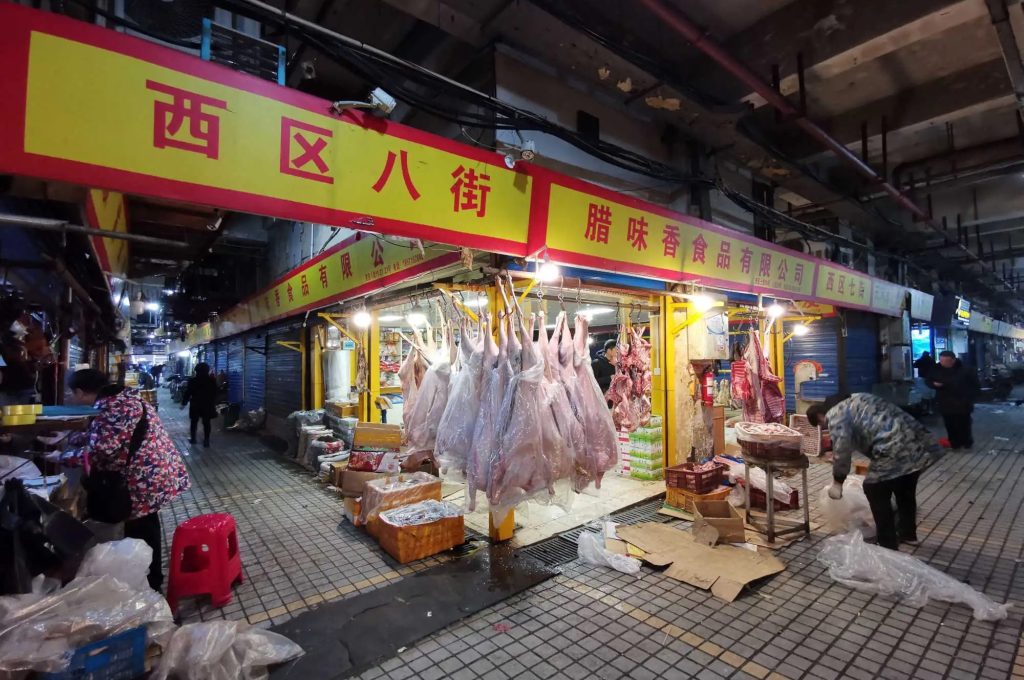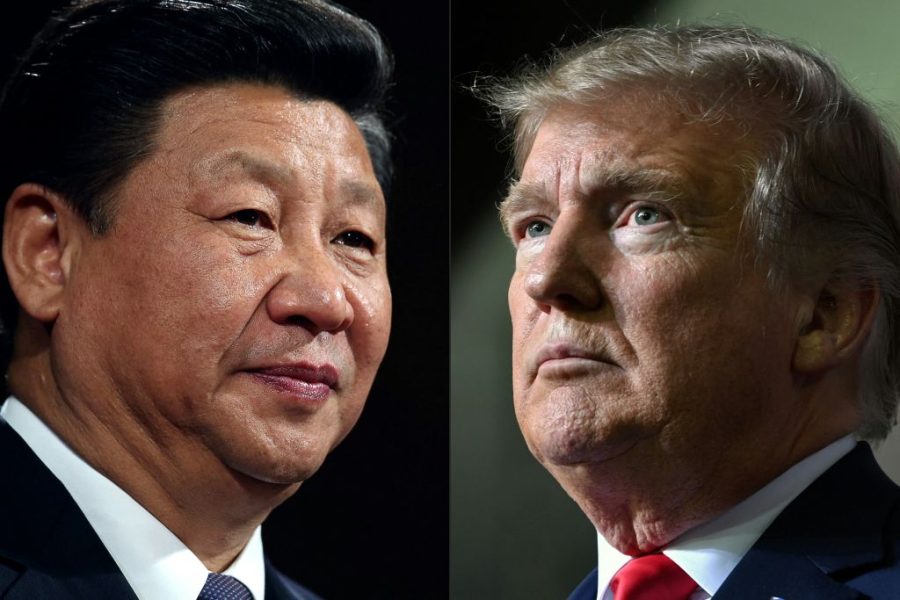Ever since the world was forced into lockdown in March 2020, the question of where and how Covid-19 appeared has captivated scientists and the wider public.
Tracing the source of the virus could be invaluable in preventing future pandemics, yet the quest to find Covid’s origins has been deeply politicized, which in turn has altered the course of research, collaboration and dialogue. Sadly, as a recent publication by Chinese scientists in Nature shows, we are still a long way from getting to the bottom of what happened in Wuhan in 2020.
The problems with finding the origins of the virus began almost as soon as the potential significance of Covid was realized. Soon after the outbreak in Wuhan, the Huanan wet market — where Covid is believed to have crossed from animals to humans — was closed and Chinese scientists took swabs from around the market, including wildlife cages, but kept this information secret from the world. Before these swabs were taken, no attempt was made to test the actual animals sold at the market at the time of the outbreak, or to trace where those animals had been taken.
Meanwhile as Covid spread through China, scientific institutes were initially encouraged or requested to develop task forces to chase down the origins of Covid. Even researchers who had never worked on bats — which at the time were believed to be the most likely origin of the virus — were suddenly going into the field to find a wild source. At the same time these institutes were placed under intense scrutiny. Any publication had to be vetted and approved prior to submission if it mentioned the possible origins of SARS-CoV-2, and scientists were virtually forbidden to talk to journalists, even about their published work.
Then the political climate began to shift once again, and the Chinese government began to make research into Covid’s origins more difficult. By early 2021 the ability to conduct field research on bats became more and more challenging, and within provinces such as Yunnan, where the most similar viruses to SARS-CoV-2 had been found in bats, scientists were told that bat research was no longer permissible by the middle of the year. This included me and my research team. While we had conducted our bat work unhindered in Yunnan since 2013, and like so many scientists were encouraged to take more samples in 2020, by 2021 we were the subject of intense scrutiny, sometimes involving police checks, interviews and monitoring even before our sampling became impossible.
After this, claims that Covid emerged from outside China suddenly became more frequent and, unbelievably, publications in Chinese journals said they had failed to find SARS-CoV-2 in surveys of thousands of Chinese bats. This was despite prior publications by the same authors finding the exact opposite.
In early 2022 China finally acknowledged that it had taken swabs from the Huanan wet market, when it published a preprint (a study which has not been peer-reviewed) by George Gao of the Chinese Center for Disease Control, along with several other academics. The underlying data it was based on was not publicly released.
This preprint is the basis of a peer-reviewed study in Nature which was published this month by China’s CDC, on the origins of the SARS-CoV-2 pandemic. How this paper came to be published in Nature, one of the most prestigious scientific journals, when it contains so many apparent errors and obfuscations though, is not clear.
The Nature publication is based on swabs from the Huanan wet market, the cages and other samples taken directly from animals. Unlike the cage swabs, it’s impossible to know where these animal samples came from and how they relate to the market. Several stray animals around the wet market were tested at the end of March, after the virus had already peaked and waned in Wuhan. The value of the animal data, three months after the market was closed, is very limited.
It’s clear for other reasons the Nature paper was built on shaky foundations. When the preprint it is based on was first published in February 2022, it was criticized for its unclear methodology. The preprint stated, for example, that “human nucleic acid was removed using an enrichment kit” when in fact human DNA hadn’t been removed from the samples — and an “enrichment kit” isn’t a recognized scientific term in this context.
Not only were some of the preprint’s author affiliations incorrect (indicating that some of the authors may not actually have seen the paper), but it used a mix of scientific and common names for species detected. So the text stated “badgers” were sold at the market, even though there are three completely different types of animal that have “badger” in their common names. The preprint also claimed that raccoon dogs were not present at the market, despite contrary evidence from multiple sources that they were in fact sold there.
Some light was shone on this murky analysis when western scientists found in 2023 that the underlying data from Wuhan used by the Chinese scientists had been published on the internet. Using this data, which was taken offline when the Chinese data publishers were invited to collaborate, the western scientists (led by Crits-Christoph) were able to publish a preprint study earlier this year. Tellingly, their results were strikingly different to the Chinese scientists.
They found that, contrary to the CDC study, raccoon dog DNA was found in the market cages and that these samples also tested positive for SARS-CoV-2. This indicates that not only were raccoon dogs present at the market, but they may have been infected with Covid, making them a likely spillover candidate. This cannot be confirmed as swabs from the animals at the market in 2020 were never taken.
Why did the western scientists find raccoon dog DNA while the Chinese preprint did not? One explanation is that the CDC team in China used a limited DNA database to identify the animals they were examining. In their database they only had a single DNA sequence for raccoon dogs as a reference but hundreds of sequences for regular dogs. So they misidentified the raccoon dog DNA they had found in Wuhan as dog DNA.
After the western scientists published their analysis — which identified major flaws in the original Chinese CDC research — the CDC responded by releasing an updated preprint. This new preprint corrected the previously wrong author affiliations and increased the volume of analysis. But it failed to fix the many methodological issues and — even worse — it introduced new errors that have now been repeated in the Nature study.
In the Nature publication, the DNA of several species has been identified that in no way could have been in the Wuhan market. For example the researchers claim to have Panda DNA in their samples. Given that killing a panda is punishable by a twelve-year prison sentence or death in China, it is not possible that there was one being sold in Huanan market in 2020. Other animals identified in the swabs claim to be chimpanzees (not native to the region), degus (from South America), two groups of molerats (native to Africa) and antelopes, among many others.
Some of these animals only had a small amount of DNA in the samples. But there was an overwhelming amount of African antelope DNA in the samples, when there is no way antelopes could have been in Wuhan.
This means that the Chinese study either misidentified the DNA samples they studied (incorrect assignments), or that their swabs were contaminated in the lab when they were being analyzed. Either way, this does not inspire confidence in the study. Some of these species diverged millions of years ago from animals now found in China. If these misidentifications stem from poor species assignments, the level of checking of data must have been almost non-existent.
Why then has such poor data been published? It is not hard to guess the CDC’s motivations. Both the initial preprint and the Nature study go out of their way to suggest that Covid could have originated from outside China. The preprint suggests that to find the “real origins” of Covid we should look at studies that show Covid was present in samples from 2019 found in other countries.
The Nature study shifted its position slightly, writing that “the possibility of potential introduction of the virus to the market through infected humans, or cold chain products, cannot be ruled out yet.”
Elsewhere the Nature study stresses that none of the animal samples the CDC had taken in Wuhan tested positive for Covid. But given that most of these animals were strays tested outside the market months after it closed — and weren’t “competent” hosts for Covid-19 and so couldn’t be infected anyway — this seems like an attempt to muddy the waters.
The motivations which are made clear in the conclusions of both these papers, and the wider politisation that preceded this, means that three years since the pandemic outbreak we are no closer to finding the origins of Covid-19.
Perhaps rather than continuing to try and find “animal zero,” it is finally time to refocus our efforts on understanding why viruses like Covid spill over into human populations, to better understand what conditions may increase this risk. Because Covid will not be the last pandemic we witness, and we are yet to learn the lessons needed to prevent making the same mistakes again.
This article was originally published on The Spectator’s UK website.

























